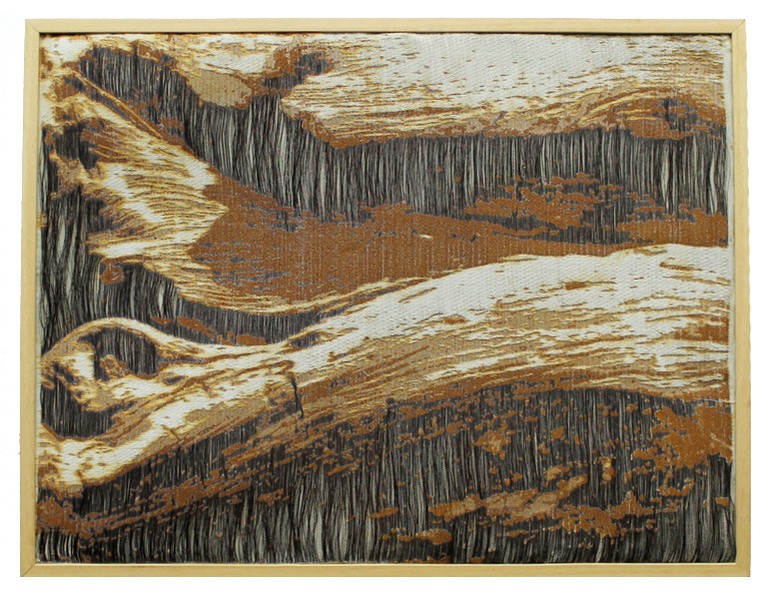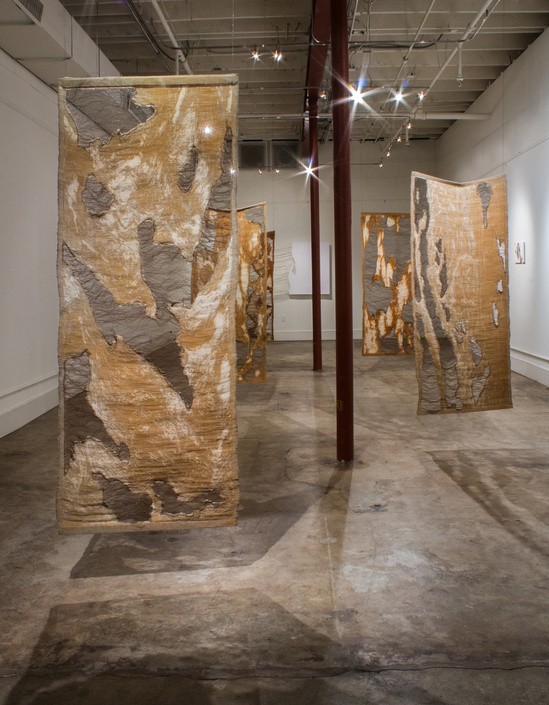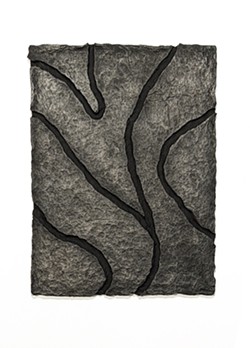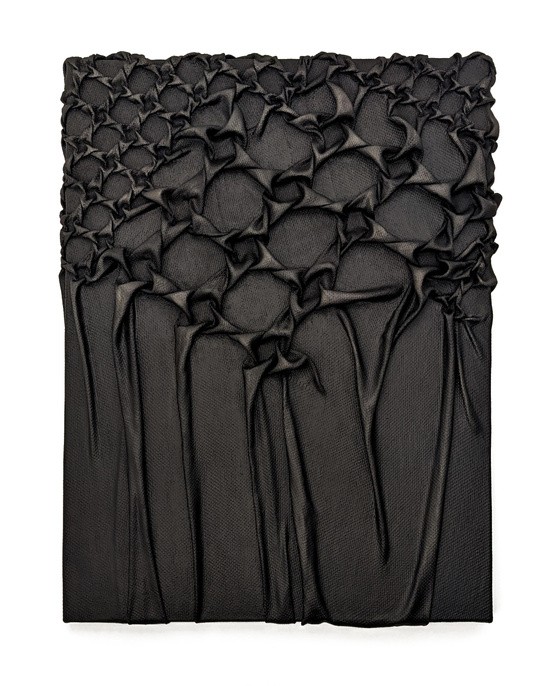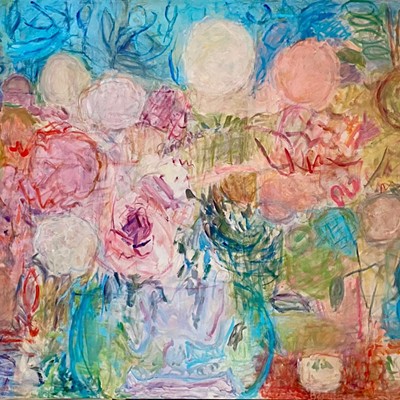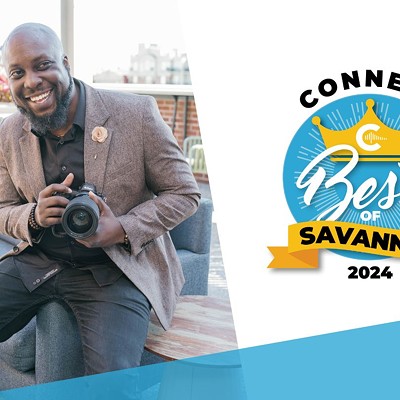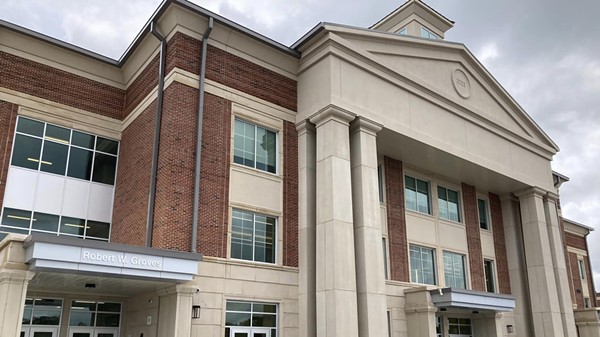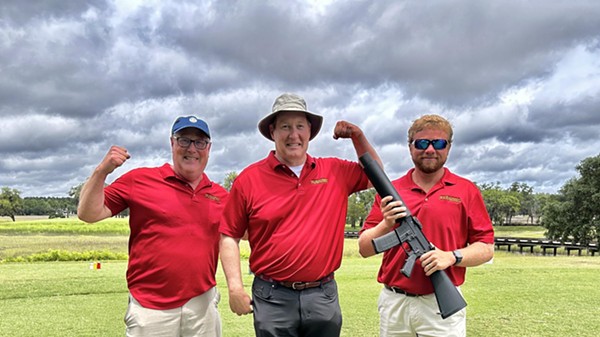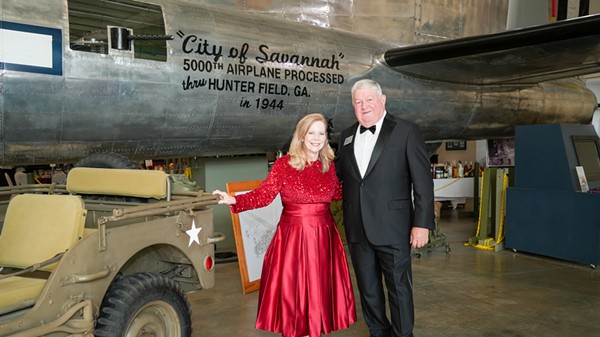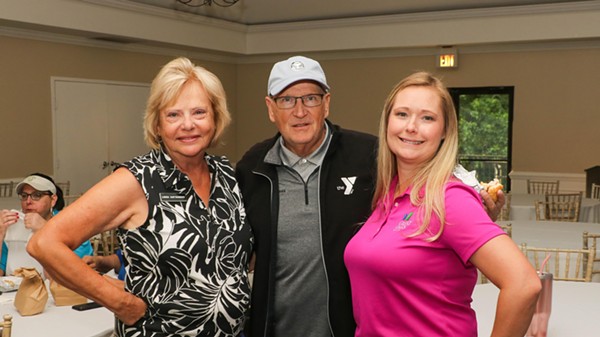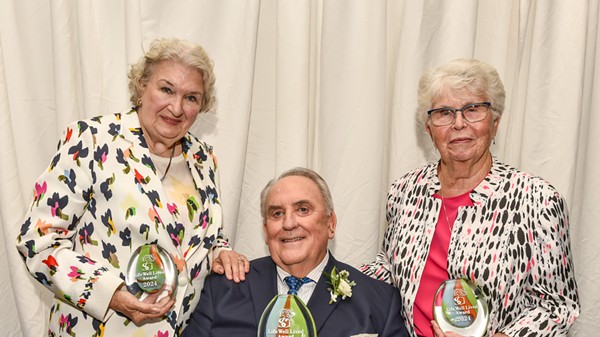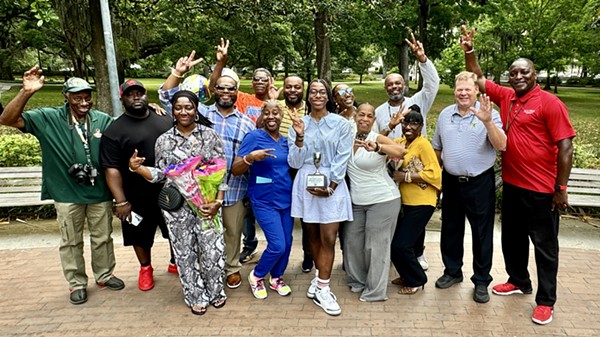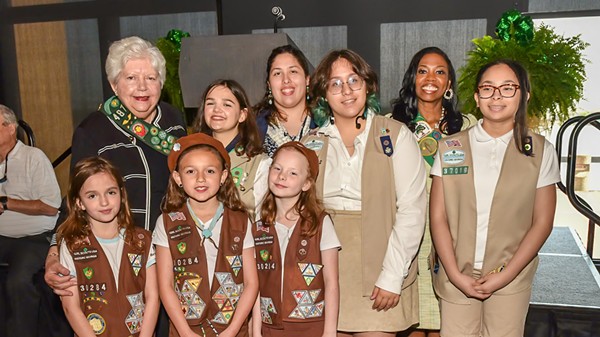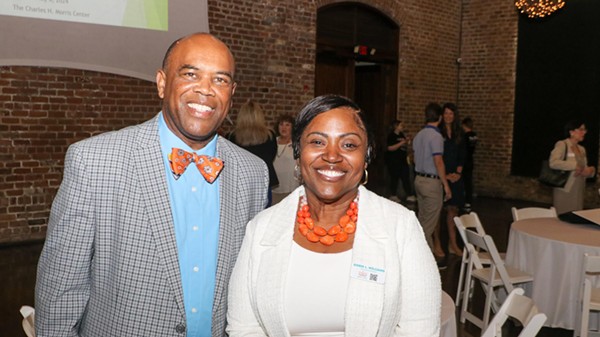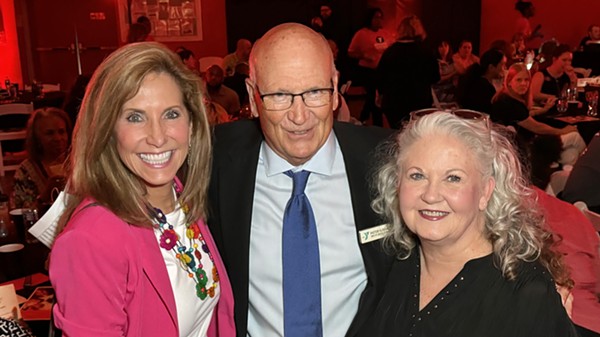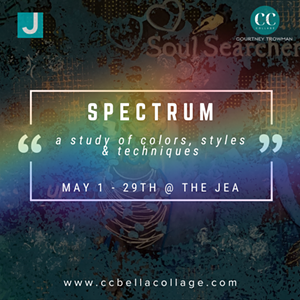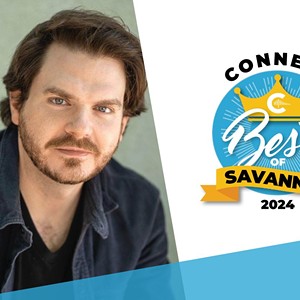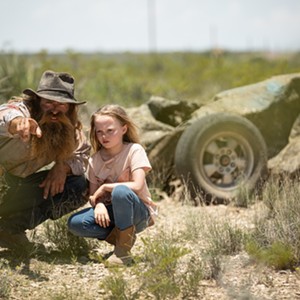A full-time fibers department professor at her alma mater, a working artist, and a volunteer board member for a non-profit she co-founded, the articulate and intelligent Jennifer Moss (who enjoys reading science articles in her leisure time) meets me in her home-based studio to discuss her “nature inspired, process driven, contemporary textiles and papers.”
Originally from Kalamazoo, Michigan, Moss knew she wanted to be an artist since the fifth grade. She attended Western Michigan University earning a BFA in Sculpture and Metalsmithing, and enjoyed a transformative year abroad in Florence, Italy where she took her first weaving course. Subsequently, she secured a research grant for her undergrad capstone project, purchased a loom, and focused the project on weaving metal.
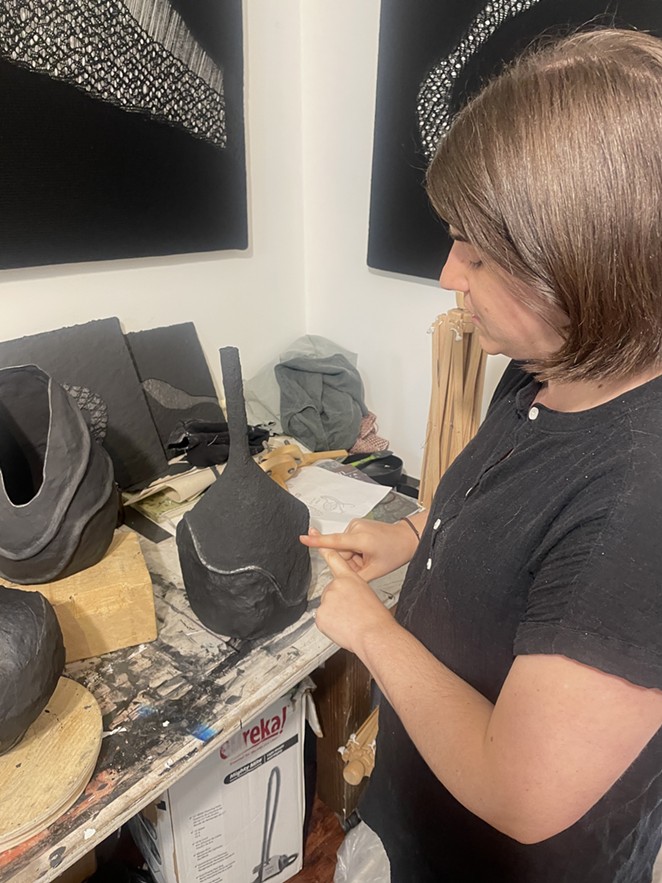
No longer having access to metalsmithing equipment and supplies after graduation, Moss turned to creating largescale sculptures from felt and sewn fibers, and to making a line of felt and metal jewelry, before relocating to Savannah in 2011 with a full scholarship to SCAD’s MFA Fibers program.
Moss tells me that her undergraduate capstone project had been about weaving soft things out of hard things: “I recreated a bedroom scene – all the textiles, the bedspread, the pillows, etc. were made from shiny silver and black low-carbon steel. But Michigan is a lot like Savannah. Lots of humidity. The steel started to rust and fall apart.”
She continues, “When I got to SCAD and took more weaving classes, I thought back to that experience and decided to explore it more. Using their computer-aided weaving, I started blending low-carbon steel with linen, silk, cotton, and other materials. When the fabric came off the loom, the steel was monochromatic gray, but then I’d wash it in salt water to start the color changing process.” That body of work resulted in Transient Structures – her thesis show of huge woven panels of fibers and rusting metal “purposefully designed to fall apart.”
Moss has since made (and sold) many smaller pieces that are more structurally sound and has shown her “Marked, Rusted, Woven” work at The Foundry Art Center outside of St. Louis in 2019, at the Savannah Cultural Ats Center in March of 2020 (only for two weeks because of the pandemic), and at Young Harris College in 2021.
Because she didn’t yet have studio space for her loom after graduation, Moss began embroidery. “I started embroidering on watercolor paper – black on white at first,” but inspired by a black-on-black painting she’d seen in a show in Nashville, “I began to coat wood panels in graphite, drilled holes with my jewelry tools, and embroidered in white. I am in love with graphite because it can be perfectly matte all the way to reflectively shiny.”
She shows me wall hangings of black fabric painted with graphite and stitched using a smocking or puckering technique into formations that resemble ripples on a beach after the tide recedes, or wispy patterns of cirrus clouds. After the fabric is smocked and attached to a frame, she applies a stiffener and then a graphite paint. She says, “I’m thinking about the stitches’ repetitive structures as being an abstraction of the repetitive structures in nature.”
Currently, Moss is excited about creating her own paper. “I took a papermaking workshop at Penland last summer and have been making embossed panels out of paper pulp. It’s all recycled computer paper and junk mail.” She shreds paper, soaks it overnight to soften, blends it in a blender to make “a paper smoothie,” drains off most of the water, glops the pulp onto the screen of a papermaking frame, and presses out the remaining water to create lightweight paper panels. By layering objects onto the frame before she presses down, she can create topographical reliefs and patterns.
Finally, we discuss the sculptural vessels she has been making since August. “I make a 3-D vessel form out of fabric – something I learned at the workshop last summer. I sew the form and then stuff it with perlite (the little white stones in potting soil) and sculpt it.” She then covers the sculpted form with four or five wet sheets of paper – sometimes embedding rope to provide pattern and texture. After it dries, she cuts open the inside fabric, empties out the perlite, extracts the fabric from the mold, and applies graphite to the surface. The resulting vessels are black organic shapes, perfectly echoing her 2-D paperwork and her black, puckered fabric pieces.
Meanwhile, behind us, sits her loom. The ever-busy Moss works with art consultants and is regularly commissioned to create woven fabrics for hotels or corporate offices. She calls this “the financially viable part of my art practice!”
The rusted metal weavings, the graphite embroideries, the 2-D paper pieces, and the sculptural vessels all focus on the transience of the natural world. “I’m not a religious person but I find something bigger than myself and something inspiriting in nature. I see connections – the same patterns that are on a microscopic scale are on a macroscopic scale, and the way the world has organized itself into these super-efficient and beautiful patterns. I love reading science books about physics and nature and learning amazing little details about the natural world. My first instinct as an artist is to be representational, but if I abstract my work, it pulls the viewer to spend a little more time with it.”
It would be satisfying to see Moss’s pieces displayed together to demonstrate the similarities and common themes and, indeed, she has carved out time to submit proposals for future exhibitions. She misses not having a studio at Sulfur Studios and being able to show and talk about her work during First Fridays.
Interestingly, it was Moss who first rented studio space at what is now Sulfur Studios. Before her teaching career, she was working at Sentient Bean coffee shop and bemoaning her lack of studio space. The Bean’s owner let her rent space in another building he owned at 2301 Bull, and, with partners A.J. Perez and Emily Earl, Sulfur Studios was born in the fall of 2014..
“We were filling this void that maybe people didn’t even know was there. We’ve grown, but at our core are the studios and the space for artists to work and connect.” We discuss how the organization has changed from simply being about “art for artists" to sharing their vision with the community, to reaching outside of Savannah through an international artist residency and showing contemporary work from artists throughout the southeast.
The now Executive Director Emily Earl, along with Director of Exhibitions Jon Witksy, and Moss had time during the pandemic to apply for the organization to become a 501c3 nonprofit, and ARTS Southeast was created. Moss has since stepped back from a leadership role because of her teaching commitments but continues to be involved through serving as board treasurer.
“I think it was always assumed that you graduate SCAD and move to L.A. or New York or another big city both for work and for the opportunity for community.,” Moss says. “At Sulfur, we created studio spaces, but more than that, we created this sense of community through the artists in the studios, the artists that we show, and the people who come to our events and to all the programming we do. Now, more artists feel they can stay and work in Savannah and have that community. We just need to keep making that space to keep them here, and to make Savannah an art destination.”
Find out more about Jennifer Moss’s work at www.jennferemoss.net or on Instagram @jenniferemoss. She will be working with her SCAD Fibers Department to create an installation for ARTS Southeast’s Art on Bull party and annual fundraiser on November 3. Find out more about ARTS Southeast and the party at artssoutheast.org or on Instagram @sulfurstudios.

